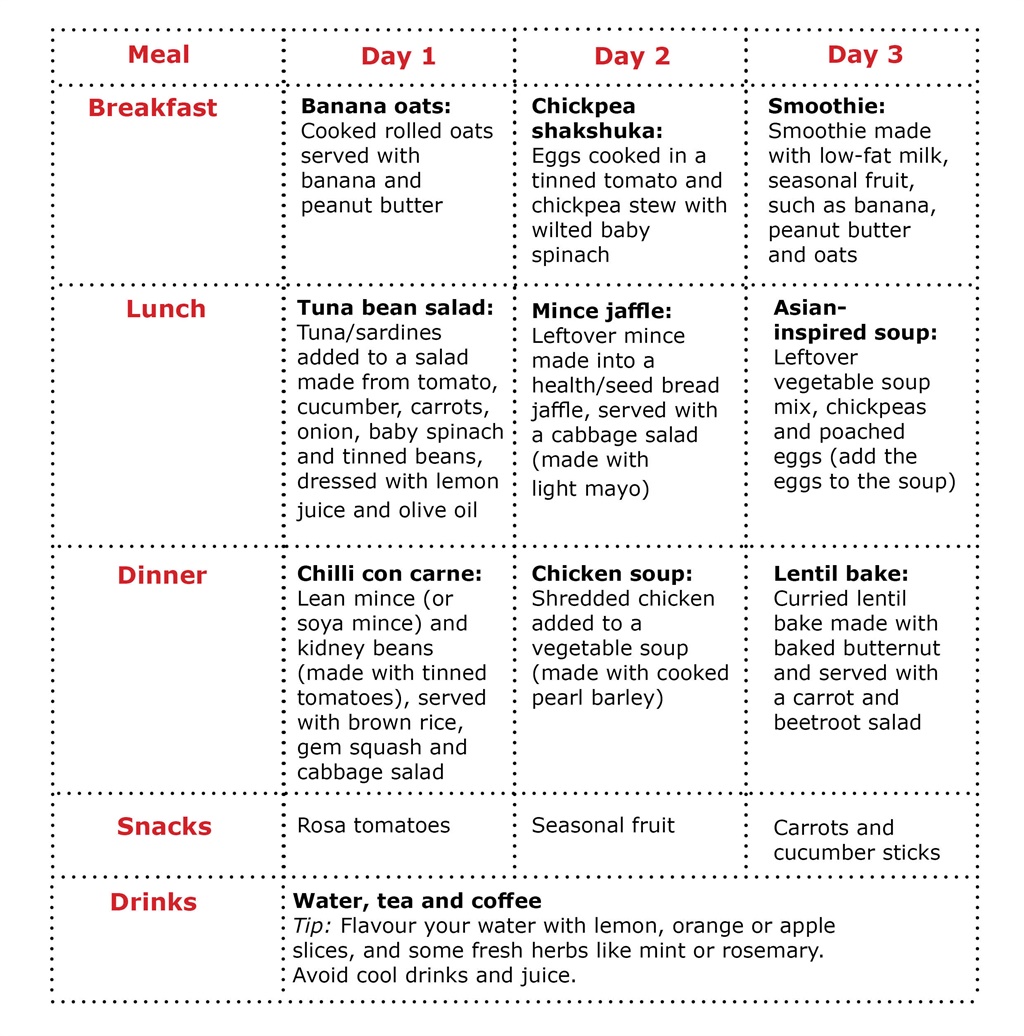The past year feels like a non-stop bombardment of price hikes and everyone is feeling the pinch.
Not to fear, we are here to guide you on how to make healthy choices on a budget.
1. Create a meal plan and grocery list
To avoid buying food that never gets eaten, it's important to plan your grocery list and meals. Make time over the weekend to write a comprehensive list of groceries and meal ideas that the entire family will enjoy. When you plan your meals and grocery list in advance you are more likely to eat home-cooked meals, buy fewer snacks, treats and convenience foods. Prepare and cook what you can over the weekend and use your fridge and freezer space wisely.
You can also gain some inspiration for meals and ideas on a budget from Food24.
2. Buy what you can in bulk and in season
It is often cheaper to buy fresh produce in bulk. You can either cook and freeze what you can or share the produce among family and friends to reduce wastage. Seasonal fruits and veggies are not only cheaper, but are also better for the environment because the food doesn’t need to be imported (which incurs a huge carbon footprint and contributes to the costs).
Struggling to budget? Here's some extra help.
3. Have leftovers for lunch
Leftovers are perfect for lunch. It means that you only need to prepare one meal a day but perhaps the biggest bonus is that it’s one less meal you must actively think about. Preparing a big pot of vegetable soup over the weekend is a wonderful time saver in winter – just freeze and defrost as needed. This soup can be used as a vegetable for dinner or add some tinned beans or lentils as your protein to transform it into an easy, nutritionally balanced meal.
4. Swap cool drink and juice for water
Nothing beats a big glass of water to quench your thirst. Not only does it hydrate you, but it is also a much more affordable and healthier than cool drink or juice. Cool drinks and juice are packed with sugar (seven teaspoons per 340ml) and are not recommended as they significantly contribute to weight gain and related risks of chronic diseases, such as diabetes.
5. Choose plant-based proteins whenever you can
Meat, chicken and fresh fish can be expensive. Consider bulking up your meat dishes with more vegetables, legumes (like beans, lentils, chickpeas or split peas) or soya beans. Alternatively, consider going meatless for one or two days a week. A meatless meal can be as satisfying as its meaty counterpart. Use eggs, low-fat dairy, legumes and soya to create delicious vegetarian dishes, which are as healthy for you as they are on your wallet.
Written by: Abby Courtenay
Image credit: iStock
Fuente: www.health24.com
